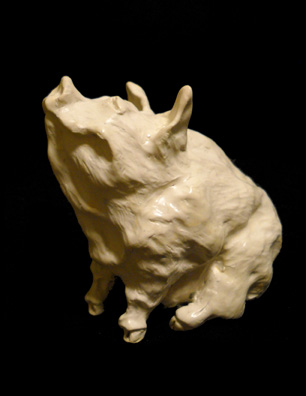Bronze Casting -
Step 1
Making the Model

All right. The first step in bronze casting is to make a model. Yes, a model. As all CooperToons readers know, a final bronze statue is actually a cast created by a rather lengthy process. And to get a cast you have to create a mold in which to pour the bronze. And to make a mold, you need a model from which to make the mold.
Traditionally and largely today, the model of a bronze sculpture is made from clay. It can't be denied that water based clay is superior for shaping and sculpting. If it's too thick, you add water. If it's too thin, you can let it sit for a bit. Oil based clays - which do not harden - also are used. But you want to avoid clays that contain sulfur as they make certain types of molds stick to the model.
This model, though, is made from polymer clay which if you consider the span of the history of art is a quite modern invention. Polymer clay is a formulation of polyvinyl chloride which contains plasticizers to make the material malleable for shaping, but which upon baking in an oven at the designated temperature and time hardens to a reasonably durable solid.
The modeling characteristics of polymer clay are not - in CooperToons opinion - all that great, and there are tricks and techniques (and many books) on making polymer clay sculptures. Polymer clay is also more expensive than water base clay and recently there have been some concerns about the plasticizers usually used in PVC formulations. But polymer clay's great virtue is it makes far less of a mess than a water based clay. So you can fashion a polymer sculpture whilst lounging about the house, something not recommended using water based clay.
This model, after creation, was coated with shellac to make the surface smoother and tougher. Then once the model is completed, you have to move to Step #2 and begin making the mold.